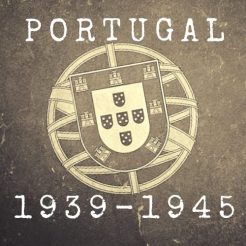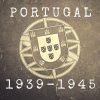
IMote about the atack on the Mahronda from the War Diaries of the Admiralty
(National Archives and Record Administration, USA)
Nacala
(Portugal)
Captain:
Type: Thug Boat
Tonnage: 2072 gt
Owner: Companhia Nacional de Navegação
Homeport: Lisbon
Construção: England (1886)
On the morning of June 12, 1942, the tugboat Nacala entered the port of Mozambique, pulling three whaleboats with castaways from the British steamer Mahronda, sunk the previous afternoon by the Japanese submarine I-20. A little further north, near Cabaceira beach, another lifeboat was found and towed to Mozambique by a motor boat sent by the Port Authority. A fifth boat, commanded by the second officer, arrived at Choca following a small local rowing boat.
A total of 154 crew members and three passengers arrived in Mozambique from this ship that had left Durban for Lourenço Marques. Six were serious injured and were admitted in the Miguel Bombarda hospital, where one died.
After the ship sank, the castaways had been distributed among five whaleboats. The one in which the commander was following and two others arrived near the lighthouse of the Goa island on the night of the 11th, warning the lighthouse personnel of their presence. They tied themselves to a buoy and waited for the morning and for the change of tide to try to enter the port, but when the sun came up the Nacala appeared. They had been seen from earth.
The tugboat returned shortly after to the same area because another lifeboat and a raft had been located. They belonged to the Panamanian Hellenic Trader. A motor boat was also sent by the port captain to carry out searches, having found and towed a fourth lifeboat to Mozambique.
The fifth whaler, which had advanced ashore before the others because of buoyancy problems, entered Choca following a boat with two white settlers, which were later identified as Germans. Apparently they had a radio transmitter with them, wish raised the suspicion that the Mozambican Germans supplied the U-boats and informed them of the presence of Allied ships. Subsequent investigations confirmed that while it was true that the German and Italian consulates provided military information to their countries' secret services, there was no direct community support for the submarine fleet in the Mozambique Channel.
On land, the castaways of the Mahronda and the Hellenic Trader were housed in the premises of local companies and in the only hotel of the region. The Governor of the Province of Niassa was asked for help in obtaining mattresses, and 45 were delivered from a bunch of 200 that had been purchased to ensure the stay of the entourage of the Portuguese President of the Republic, Óscar Carmona, who visited the colony in 1939.
The Mahronda was hit by a torpedo fired by the Japanese submarine I-20 at 5.30 pm on 11 June. Three lifeboats were destroyed, but the crew escaped in the five that survived. One was ordered to head ashore as it was taking on water, while the others stayed in the vicinity of the injured ship until close to 8.30 pm when it sank.
C.G.
Mahronda
(GB)
Captain: W. Hill
Type:Merchant steamer
Tonelagem: 7926 gt
Proprietário/Owner:
Porto/Homeport:
Construção/Built:
Sources:
National Archives UK, Kew (GB) § Arquivo Histórico da Marinha (PT) § Arquivo Histórico do MNE (PT) § Shipping Company Losses of the second World War, Ian M. Malcolm § Lista dos Navios da Marinha Portuguesa, datas 1939 a 1945 § British and Commonwealth merchant ship Losses to Axis submarines 1939-1945, Alan J. Tennent § NARA

